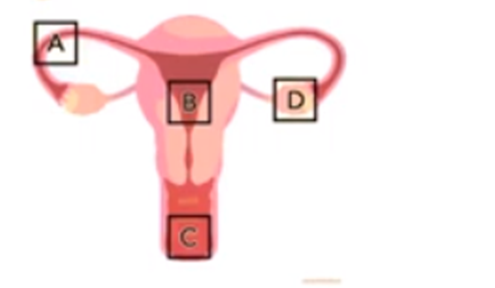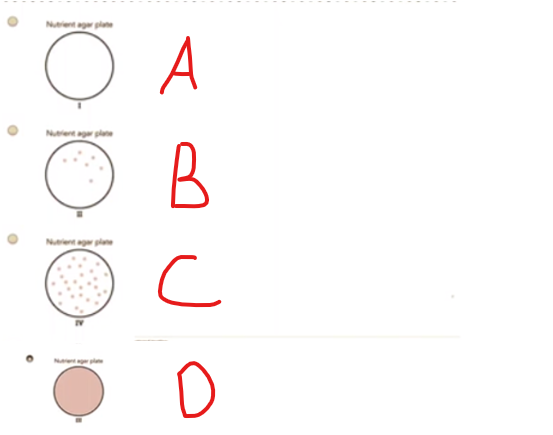Which of the following tissues lines the interior structures of the heart?
A. Epicardium
B. Pericardium
C. Myocardium
D. Endocardium
For those aiming to excel in their ATI TEAS test and secure admission into their desired nursing program, ExamGates offers an invaluable resource. Our platform features practice questions meticulously crafted by tutors who have previously aced the exam themselves. With ExamGates, you can access content that is 100% relevant to the test, accompanied by vivid images and illustrations. Additionally, our platform provides comprehensive explanations for both correct and incorrect answers, empowering you to fully grasp the material and optimize your study efforts. Take the first step towards your nursing aspirations with ExamGates today.
The endocardium lines the interior structures of the heart. It is a thin, innermost layer of the heart wall that lines the heart chambers and valves. It is composed of subendocardial connective tissue and endothelial cells that are continuous with blood vessel endothelium.
Therefore, the Correct Answer is D.
More Questions on TEAS 7 Science Exam 5
Question 1:
A slice of apple left on a table slowly goes brown due to an enzymatic reaction. Dipping the apple slice in lemon juice prevents it from browning Which of the following best explains this result?
A. Lemon juice has enzymes which reverse the browning reaction
B. Lemon juice has a pH which inactivates the enzymes
C. Lemon juice functions to bleach the brown material
D. Lemon juice functions to dilute the brown material
The Correct Answer is B.Browning of the apple surface is due to the action of the enzyme polyphenol oxidase. Lemon juice is acidic and lowers the pH of the apple's surface. This inactivates the enzyme polyphenol oxidase, which works best at a neutral pH. This in turn reduces the browning action on the apple.
Question 2:
Which of the following tissues lines the interior structures of the heart?
A. Epicardium
B. Pericardium
C. Myocardium
D. Endocardium
The Correct Answer is D.The endocardium lines the interior structures of the heart. It is a thin, innermost layer of the heart wall that lines the heart chambers and valves. It is composed of subendocardial connective tissue and endothelial cells that are continuous with blood vessel endothelium.
Question 3:
Which of the following organelles is the site of intracellular digestion?
A. Mitochondria
B. Lysosomes
C. Centrosomes
D. Ribosomes
The Correct Answer is B.Lysosomes are membrane-bound organelles that contain lysozymes that are responsible for breaking down waste materials and cellular debris through intracellular digestion. This process helps maintain cellular health and homeostasis by recycling and degrading cellular components.
Question 4:
Parasitic worm infestation is hypothesized to be damaging to the host. However, scientists have recently discovered that worm infestation can relieve the effects of certain autoimmune disorders, in which of the following ways should the hypothesis be modified, given the new findings?
A. Lack of worm infestations is the cause of some autoimmune disorders.
B. Worm infestation reduces the severity of certain autoimmune disorders
C. Worm infestation prevents the body from immune malfunction
D. Worm infestations exacerbate the body's immune reactions
The Correct Answer is B.The new findings can be used to generate a hypothesis to reflect the beneficial aspect of worm infestations in certain autoimmune disorders, indicating that they can help reduce the severity of the condition.
Question 5:
An experienced mountaineer decides to climb Mount Everest, taking the same route in the same season and with similar materials and equipment used in a fatal 1924 expedition Which of the following is the scientific purpose of such a climb?
A. To measure the oxygen levels at high elevation
B. To assess why the earlier expedition failed
C. To show that modem technology makes climbing safer
D. To identify routes that can be explored in future climbs
The Correct Answer is B.The experienced mountain climber is replicating the conditions of the past expedition to understand why that earlier attempt was unsuccessful.
Question 6:
in pea plants, green pod color (6) is dominant to yellow pod color ( A cross was done between a plant with green pods and a plant with yellow pods. Of the resulting offspring 50% had green pods and 50% had yellow pods. Which of the following were the genotypes of both parent plants?
A. Ggx Gg
B. GG x gg
C. Gg x gg
D. gg x gg
The Correct Answer is C.
|
|
G |
g |
|
g |
Gg |
gg |
|
g |
Gg |
gg |
Question 7:
Which structure of the female reproductive system is the source of the blood and mucosal tissue during menstruation? (You will find hot spots to
Select in the image below. Select only the hot spot that corresponds to your answer.

A.
B.
C.
D.
The Correct Answer is B.The inner lining of the uterus is the source of blood and mucosal tissue that is shed during menstruation.
Question 8:
Escherichia cell is plated on nutrient agar plates that each contain a different type of antibiotic. The shaded area represents growth of the bacteria. Which of the following plates contains bacteria that were most resistant to the antibiotic

A. A
B. B
C. C
D. D
The Correct Answer is C.This is the plate with the most growth despite the presence of antibiotic cover.
Question 9:
Which of the following is correct regarding the pH scale?
A. A substance with a pH of 3 is two times more alkaline than a substance with a pH of 4
B. A substance with a pH of 3 is 10 times more acidic than a substance with a pH of 4
C. A substance with a pH of 3 is two times more acidic than a substance with a pH of 4
D. A substance with pH of 3 is 10 times more alkaline than a substance with a pH of 4
The Correct Answer is B.The pH scale is logarithmic, indicating that each whole number change on the pH scale represents a tenfold change in acidity or alkalinity. Therefore, a substance with a pH of 3 is 10 times more acidic than a substance with a pH of 4.
Question 10:
Using the equation PH = -log (H+), a solution with a (H+)= 10+ M has a PH of which of the following?
A. 9
B. 5
C. 1
D. 10
The Correct Answer is C.Concentration of H+ in the solution = 10 −1 M
pH= -log(10 −1)
pH= -(-1)
=1